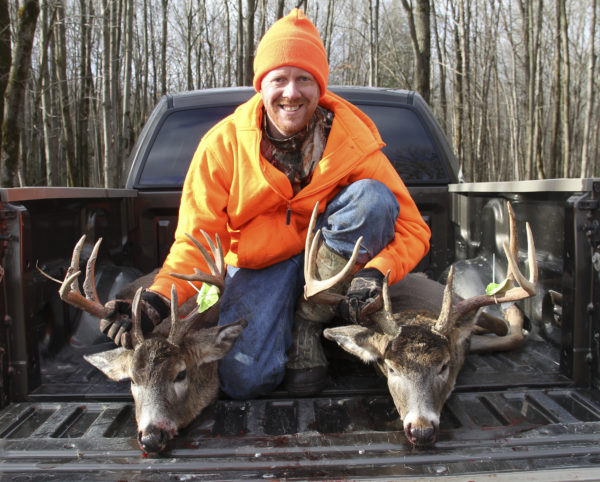Tips to Become a Better Hunter
 Whitetail deer hunting offers a thrill like nothing else. The greatest reward of it comes from stalking your prey out in the great outdoors. When you visit our Texas hunt lodge, you greatly improve your chances that you will bag a trophy whitetail. With that said, let’s have a look at some of the hunting tips that could help you to bring home that big 15-point buck off the hunting ranch.
Whitetail deer hunting offers a thrill like nothing else. The greatest reward of it comes from stalking your prey out in the great outdoors. When you visit our Texas hunt lodge, you greatly improve your chances that you will bag a trophy whitetail. With that said, let’s have a look at some of the hunting tips that could help you to bring home that big 15-point buck off the hunting ranch.
Tip #1: Enter Slowly
As you head out to the deer stand, don’t rush straight to it. You want to walk slowly because this betrays less noise. Not to mention, you will hear a deer that might camouflage in the tree next to you. In some cases, hunters clomp straight to their deer stand unmindful of the noise. Experienced hunters know, however, that you can take a deer on the way to the deer stand.
Tip #2: Walk Silently
An excellent survivalist skill to know, most people never learn how to do it correctly. You can learn much about an individual based on how they walk in the woods. Slowing down will help you to walk quieter, but you could put a few coins in your pocket. If the coins jingle as you creep through the forest, it shows that you have to slow down your movements. Many hunters don’t pay attention to when they first get into the forest. Deer are adept at picking up when an unnatural sound enters the forest.
Tip #3: Careful of a Wounded Deer
You should approach a downed deer from above and behind the head. Deer might seem like graceful creatures, but especially bucks can do damage with their antlers. You approach it from above and behind and check the movement of the chest cavity. Pay special attention to the eyes because the eyes of a dead animal will usually be open. You can be sure that you have killed the animal when you toss a stick at it, and it doesn’t blink.
If it remains alive, you will finish it off with a quick shot behind the heart-lung area. When blackbuck hunting and you have a deer you want for a trophy, never shoot the head because you will mess up your trophy.
Tip #4: Beware of Calls
Calls work well to attract other deer to the site, but they have also attracted other animals like coyotes and bobcats. You don’t want either of these two things to run into your lap while out hunting.
Tip #5: Go Unnoticed
You never want any deer to sense your presence, but axis deer hunting especially requires sensitivity. After you set the feeding area, the axis deer will most likely exercise caution. The less it feels your presence, the higher your chances of a successful hunt. Many axis deer will first scout the area before they begin to feed. In addition, if the axis deer feels your presence, it might roar first, and you will have one chance to shoot. They move fast once in flight.
Tip #6: Don’t Shoot at What You Can’t See
Exotic hunting offers its share of tasty rewards, but you should never take an unclear shot in the woods for a couple of different reasons. First, you shouldn’t do this because of how you might only wound the deer. As a hunter, this is poor sportsmanship to only wound the deer because it will suffer even more. It goes against the ethics of hunting.
Second, just because you hear a noise doesn’t mean you should shoot at it. You need to first identify the source of the noise. Every year, the United States and Canada suffer from 1,000 hunting accidents and 100 of those accidents will be fatal. Many cases where a hunter shot at a noise led to the death of another hunter. You have to clearly identify what you’re shooting at. Even when you don’t take home game, a successful hunt is one where nobody got injured.
Any decent hunter will also aim for the vitals of the deer. Not only is this ethical whitetail deer hunting, but it is also much safer. If you only wound a deer, you will have to track a blood trail. A lot of hunters abhor this because you could track the deer for up to half a day and never find it.







Dive straight into the feedback!Login below and you can start commenting using your own user instantly